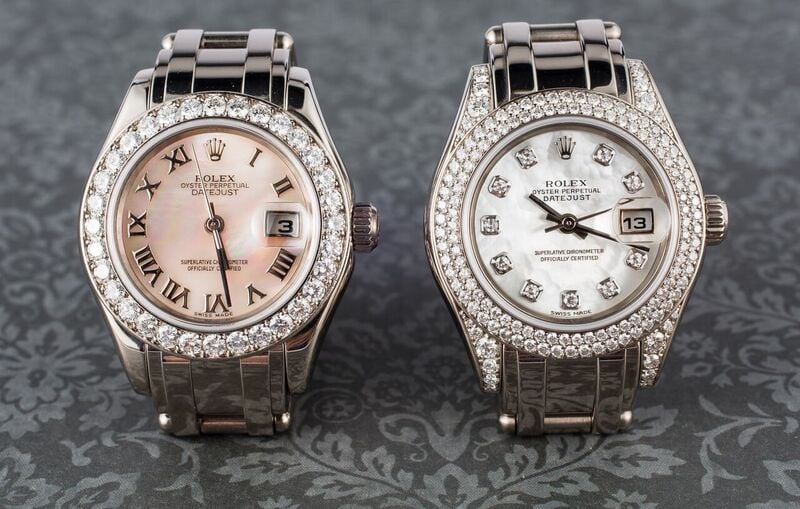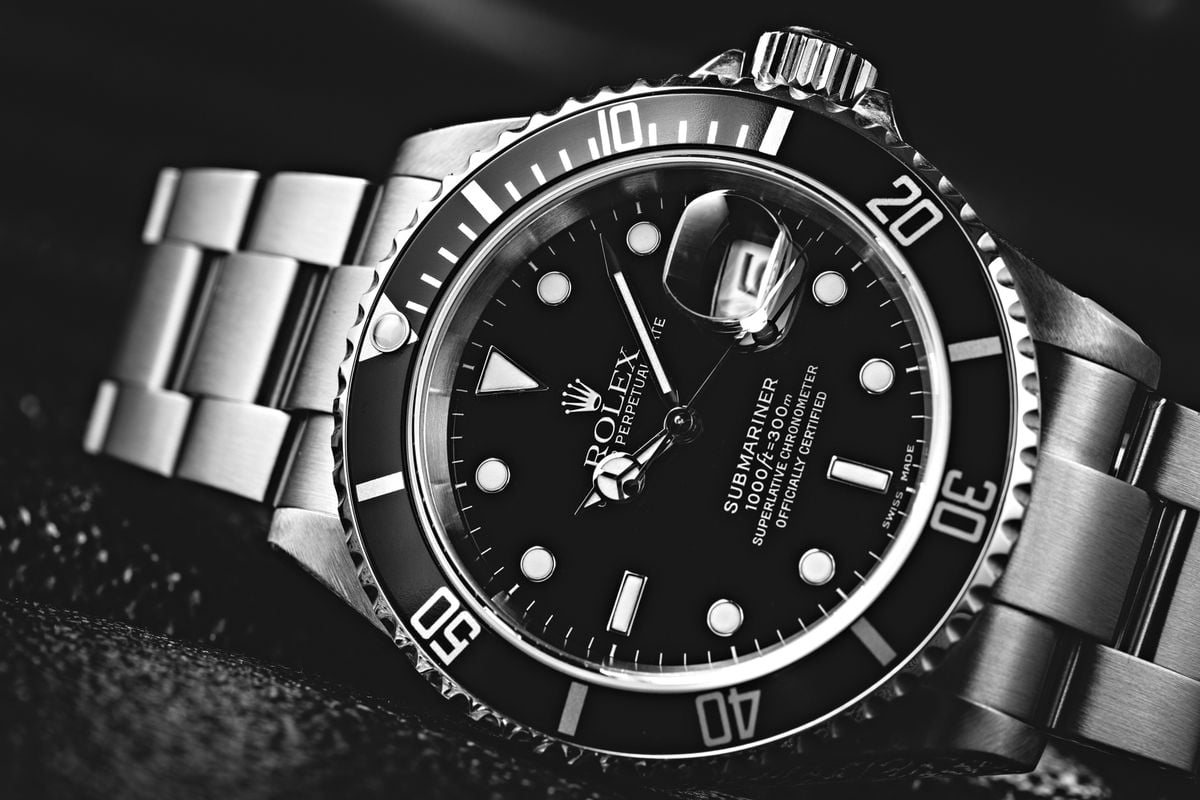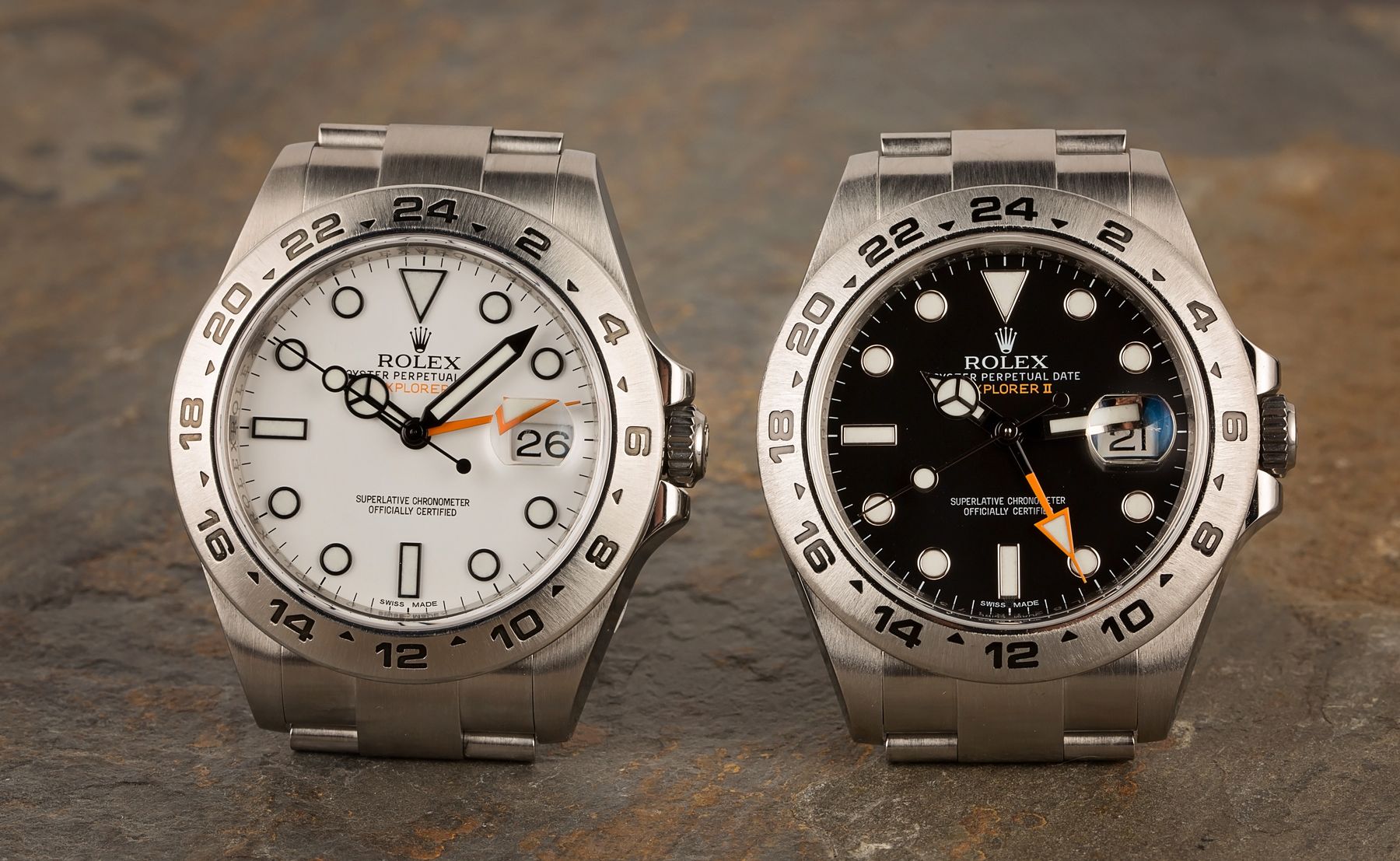The green-tinted sapphire crystal fitted to the reference 116400GV Milgauss has quickly become one of the defining characteristics of Rolex’s anti-magnetic line of watches. The Rolex Milgauss was first introduced in 1956; however, it was not until 2007 that it received its now-signature, green sapphire crystal – an exclusive feature that was originally introduced as a way for Rolex to celebrate the 50th anniversary of their Milgauss line.
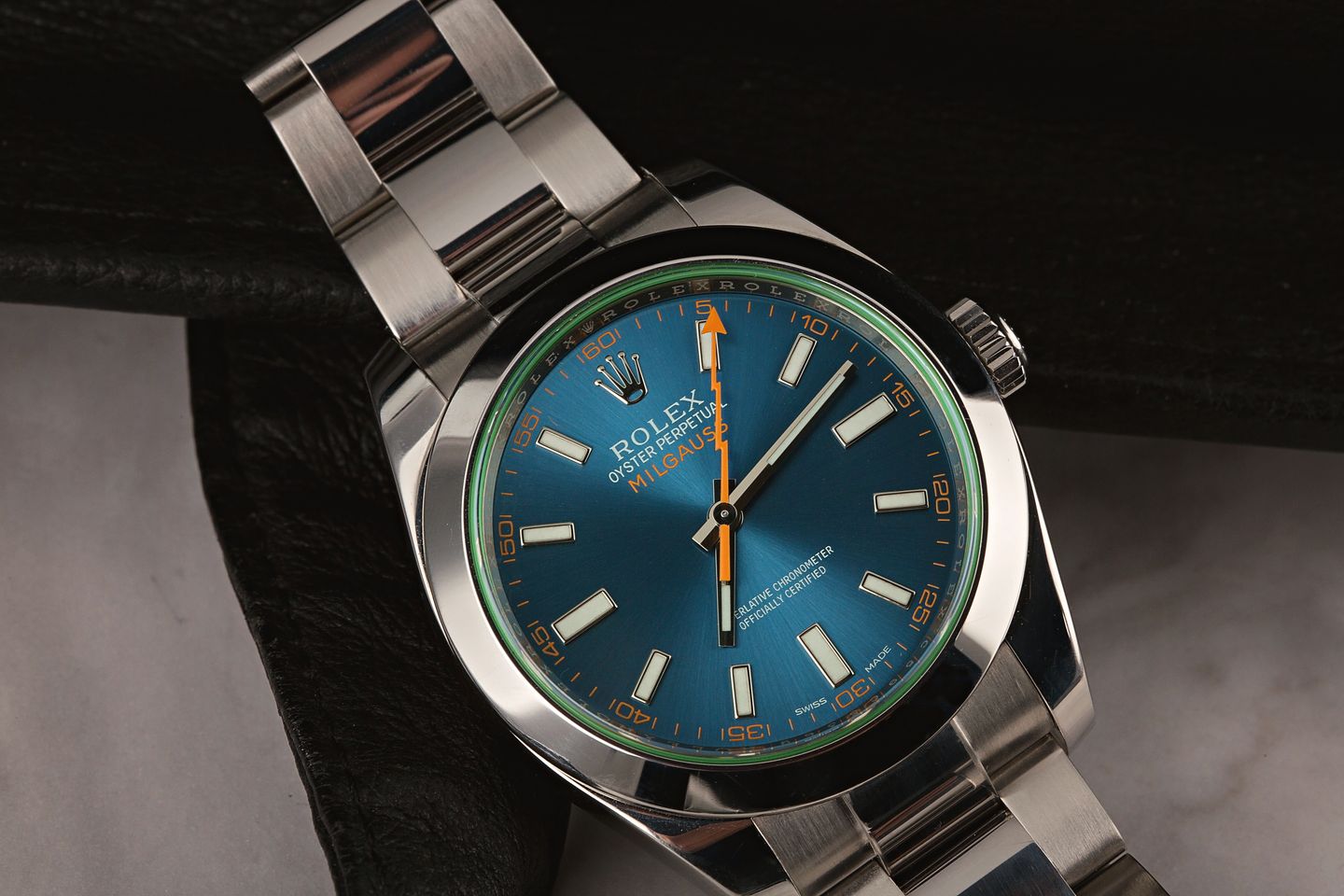
The Green Sapphire Crystal on the Rolex Milgauss
No other watch in Rolex’s current catalog is fitted with a green-tinted (or any other color) sapphire crystal. However, at the present time, all Milgauss watches that are currently in production leave the factory with green sapphire crystals. Rather than simply being a layer or coating, the light green tint is present throughout the entire material of the crystal, and will not fade or discolor after prolonged wear and use.
Rolex claims that it took them many years of research and development to master and perfect the secret procedure of manufacturing their green-tinted sapphire crystals and that the actual process of producing the crystals takes multiple weeks. What is most interesting is that despite a usual eagerness to patent their various in-house technologies, Rolex claims that the green sapphire crystal in the Milgauss is “not patented, as it is so difficult to make that no one else would even venture to try.”
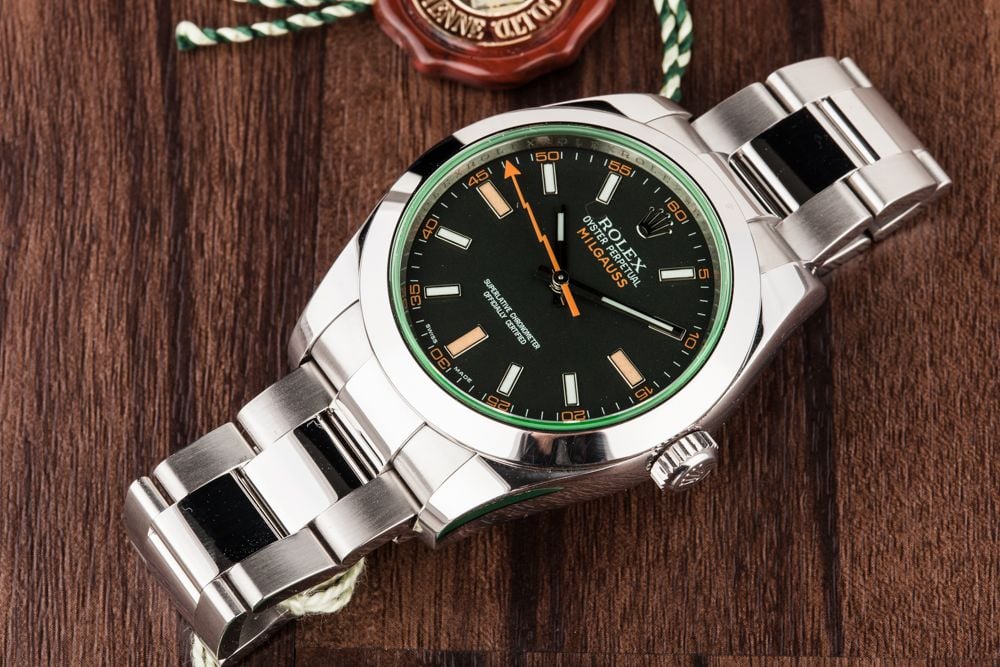
Rolex will never reveal their exact formulas and secrets about how they manufacture the green-tinted sapphire crystals fitted to the Milgauss; however, we do know some general information about green-colored synthetic sapphire and the production of sapphire watch crystals as a whole.
There are a number of different ways to produce synthetic sapphire, all of which fall into the following general methods of production: melt growth, solution growth, and high-temperature/high-pressure growth. It is hypothesized that Rolex uses a hydrothermal method of production for its synthetic sapphire crystals, which is slow, expensive, and uses heat and pressure to imitate the conditions present deep inside the earth that is responsible for the production of naturally-occurring crystalline gemstones.
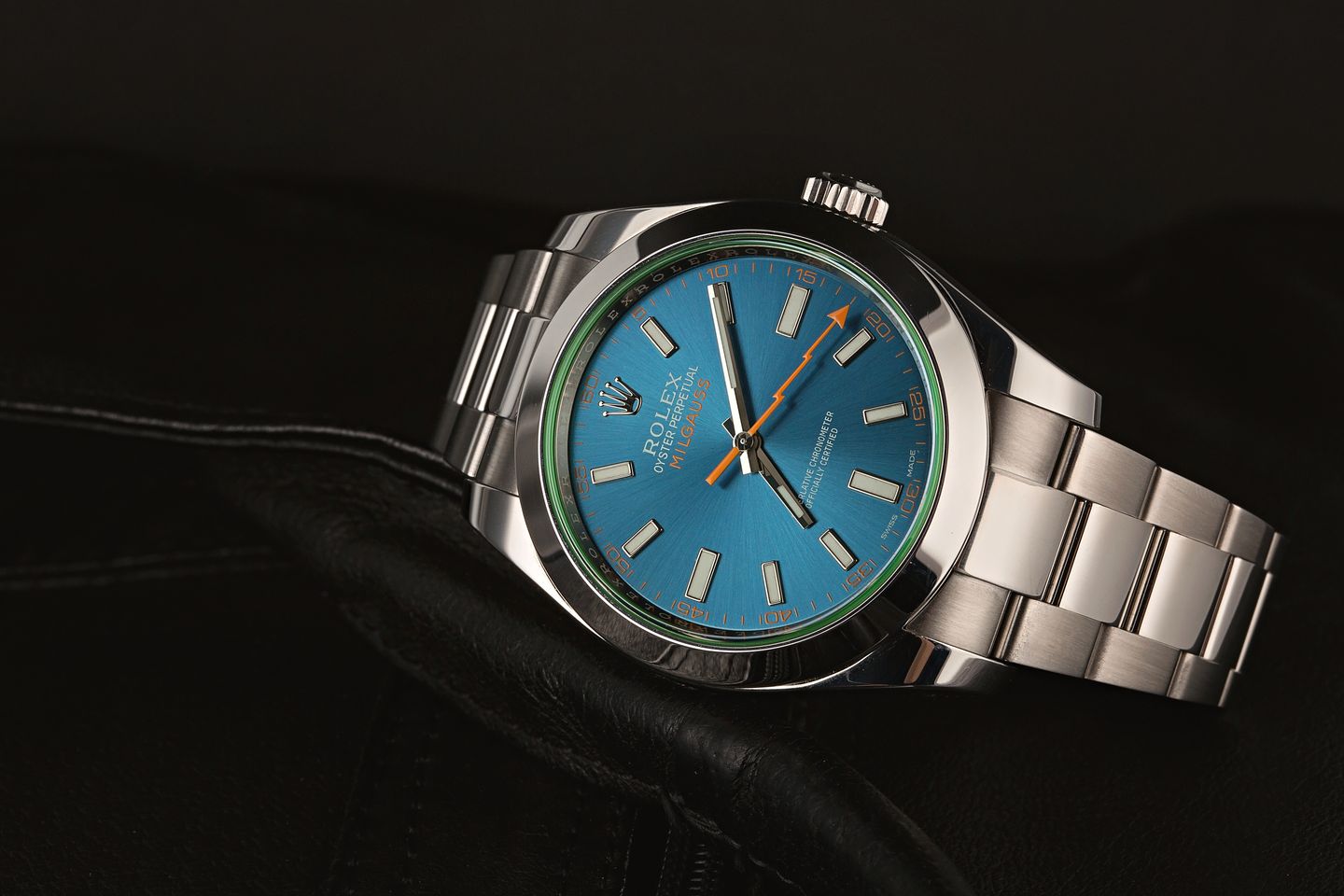
The chemical composition of synthetic green sapphire includes copper and aluminum oxide, with the copper being the element that is ultimately responsible for its signature green hue. The process of synthetic sapphire production is an expensive and exacting one; however, the additional obstacles that accompany the addition of copper – and the precision required to achieve the right amount of green tint without compromising the strength or clarity of the crystal are likely responsible for its exclusive use on the Rolex Milgauss line of watches.
When synthetic sapphire is manufactured, the material has to “grow” over the course of a period of several weeks. Particles attract to one another, forming layers that fuse together to create a dense and ultra-hard substance. The end result of production is a “boule” – a solid piece of synthetic sapphire shaped like a chunky cylinder, which is then cut and shaped to its necessary dimensions.
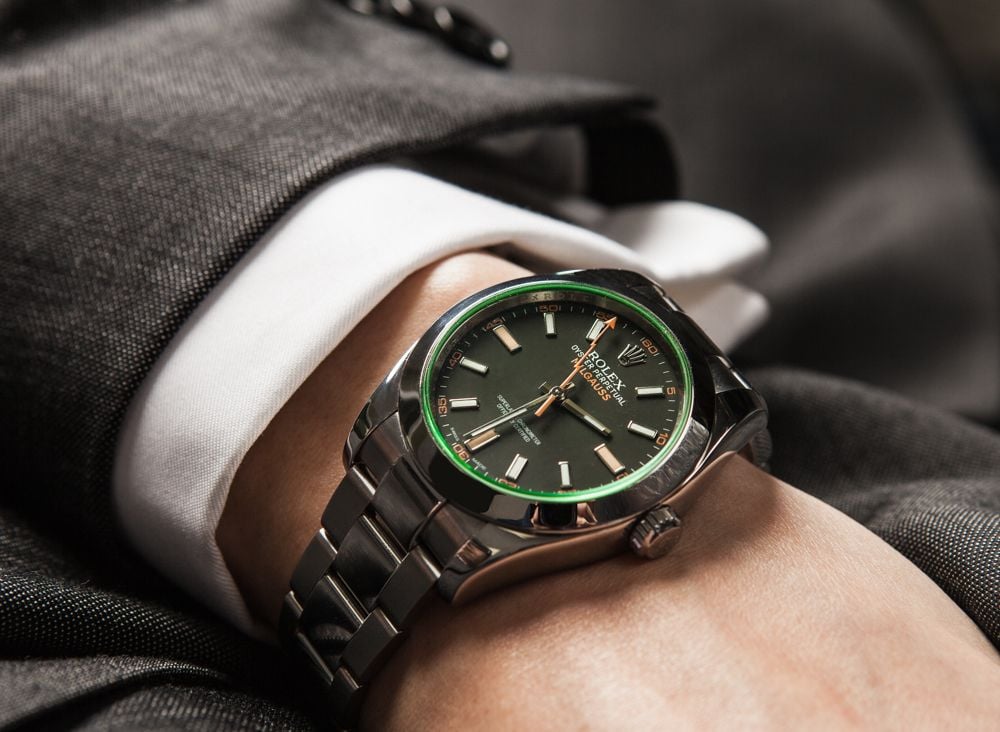
Due to the high costs of production, most watch crystal manufacturers cut their synthetic sapphire boules in a perpendicular fashion, as to maximize the number of crystals that can be created from a single boule. Although this is entirely unconfirmed, it is rumored that Rolex cuts the boule along a diagonal axis to maximize the clarity and strength of the finished crystal. In addition to complicating the cutting and shaping process itself, cutting the boule along a diagonal axis significantly increases the amount of waste, which further adds cost to an already expensive manufacturing process.
Despite not making an appearance until just over ten years ago, the green sapphire crystal has quickly become one of the defining characteristics of the Milgauss line. Its pale green tint possesses no functional advantages over a traditional, clear/uncolored synthetic sapphire crystal; however, the green crystal that is exclusively fitted to the Rolex Milgauss 116400GV is one of the primary reasons that individuals seek out this particular reference. The green crystal is something entirely unique to the Milgauss collection and is not something that is found on any other Rolex watch, past or present.



